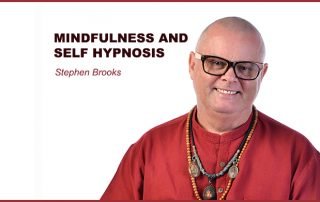
Kerin Webb – author of The Language Pattern Bible
You are the leaders in indirect Ericksonian Hypnosis
Igor Ledochowski – author of The Deep Trance Training Manual
Your training is unique, refined and dynamic, making each person feel an active part of the course
Ivan Tyrrell – author of How To Master Anxiety
You are very creative with words, you talk to different parts of a patient's mind, it’s so powerful!
Dan Jones – author of Advanced Ericksonian Hypnotherapy Scripts
Your legendary hypnotherapy courses are the most highly regarded in the field
Bill O’Hanlon – author of Taproots, Solution-Oriented Hypnosis and a Guide To Trance-Land.
Stephen Brooks knows how to do effective Ericksonian Hypnosis and teach others how to do it.
Adam Eason – author of The Science of Self Hypnosis
Your course was eye opening, heartfelt and transforming for me personally and professionally
Dr Ernest Rossi – author with Milton H Erickson of the Collected Papers of Milton H Erickson
Stephen Brooks and the art of Compassionate Ericksonian Hypnotherapy surely sets the highest standard.
RECENT BLOG POSTS
What is Ericksonian Hypnosis? Definition & History
Milton H. Erickson Ericksonian Hypnosis is a method of indirect hypnosis named after Dr. Milton Erickson. A prominent American psychiatrist and psychologist, Erickson is widely regarded as the “father of hypnotherapy”. His discoveries have influenced a wide spectrum of therapy from strategic family therapy to neuro-linguistic programming. Dr. Erickson found that indirect suggestion could result in therapeutic behavioral change. He preferred to converse with clients using metaphors, contradictions, symbols, and antidotes to influence their behavior rather than direct orders. As a patient himself who suffered extreme pain after contracting polio at an early age, he thought it critical to “put yourself in the patient’s shoes” and truly understand the client’s present situation. Unlike Freud – who encouraged self exploration – Erickson adopted a form of brief therapy where a patient’s past history is not the focal point of change. Recalling one conversation with a patient with Obsessive Compulsive Disorder who showered a dozen times a day, he asked the patient about the present rather than their past. Specifically he would ask about the process: “Do you wash from the neck down, or do you start with your feet and wash up? Or do you start with your
What is Compassionate Ericksonian Hypnotherapy?
COMPASSIONATE ERICKSONIAN HYPNOTHERAPY utilises naturally occurring trance states to help client’s overcome problems in a caring and compassionate way. Thanks to recent discoveries in neuroscience, we now understand more about how and why hypnosis works and what happens within the brain when people practice mindfulness. As a training organisation running courses in hospitals and universities we have always looked to science for explanations about hypnosis, meditation and the mechanism behind its effectiveness. Where we originally only had our assumptions and observed experience, scientific evidence is now proving that hypnosis, mindfulness and therapy based on love and compassion can affect the brain and thought process. Science is now underpinning the training we have been offering for the past 40 years.To understand how hypnosis works we need to look at how the brain processes information about the world around us. Our awareness of what is happening in the world at any given time occurs within our senses, and our sensory experience is based on past memories, future expectations and what we believe to be our present experience. These sensory experiences are evolving and changing all the time through synaptic connectivity (LeDoux 2002, Synaptic Self and Doidge 2007, The Brain That Changes Itself).
Mindfulness and Self Hypnosis
Mindfulness and Self Hypnosis usually have different goals. Mindfulness has been developed from Buddhist meditation and is traditionally used for more spiritual outcomes. It has recently become popular as a way of relaxing and resolving psychological problems in the west, but is rarely used to achieve materialistic goals. Self hypnosis too has been used widely for relaxation and resolving psychological problems, but tends to be used for achieving more materialistic goals, like success, confidence, wealth etc. Combining both principles and practices they can complement each other is surprising ways, and this is the approach that I prefer to teach on my courses and retreats. Self Hypnosis has it's place in psychotherapy but should only be taught after considering a clients / patients personality and psychological state. Self hypnosis should not be taught to abreactive Patients or Patients receiving regression therapy. If Patients are given the tools of change to take home and apply to themselves when there is a danger of them abreacting then the therapist is acting dangerously and unethically. Even if the Patient is only receiving forms of age regression they should not be given self-hypnosis skills. Patients are willing and eager to help themselves, however the




